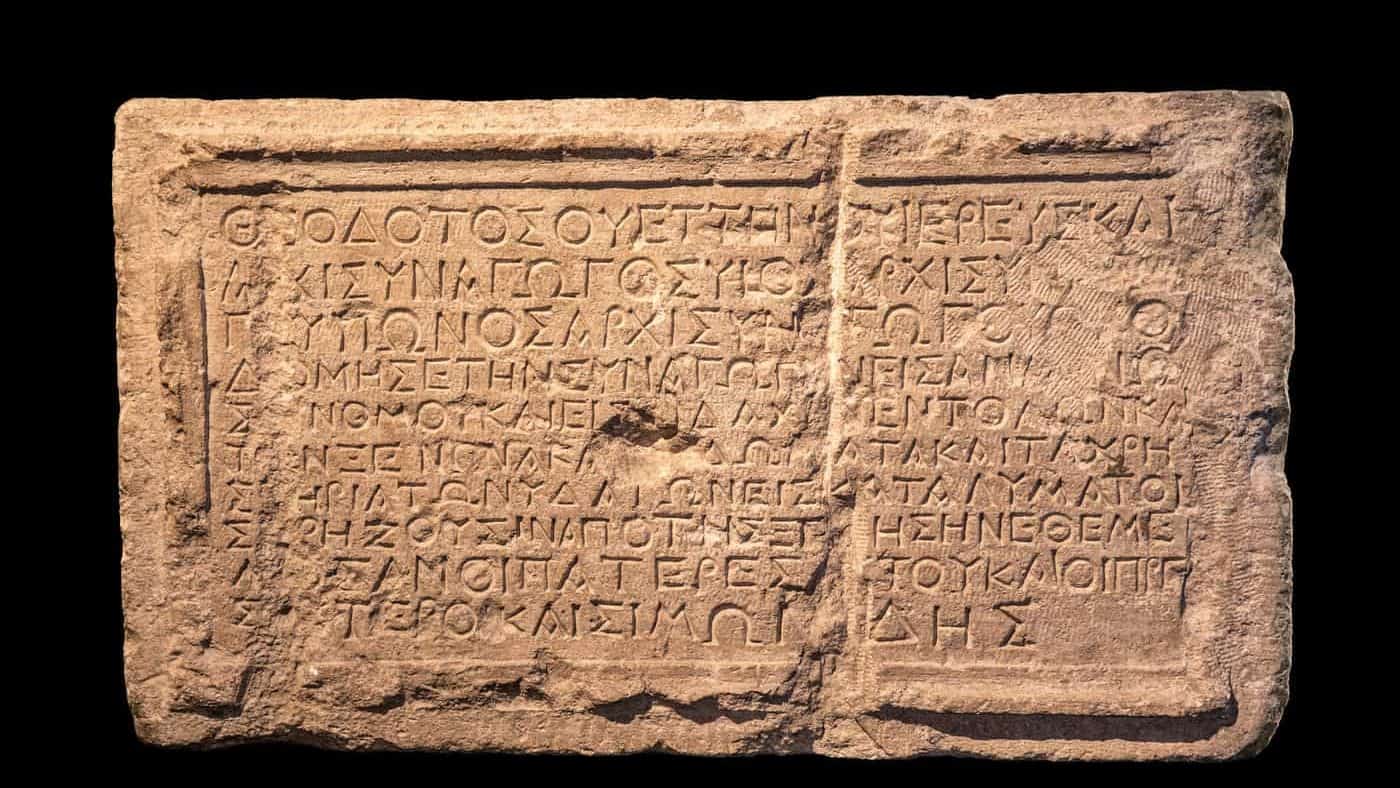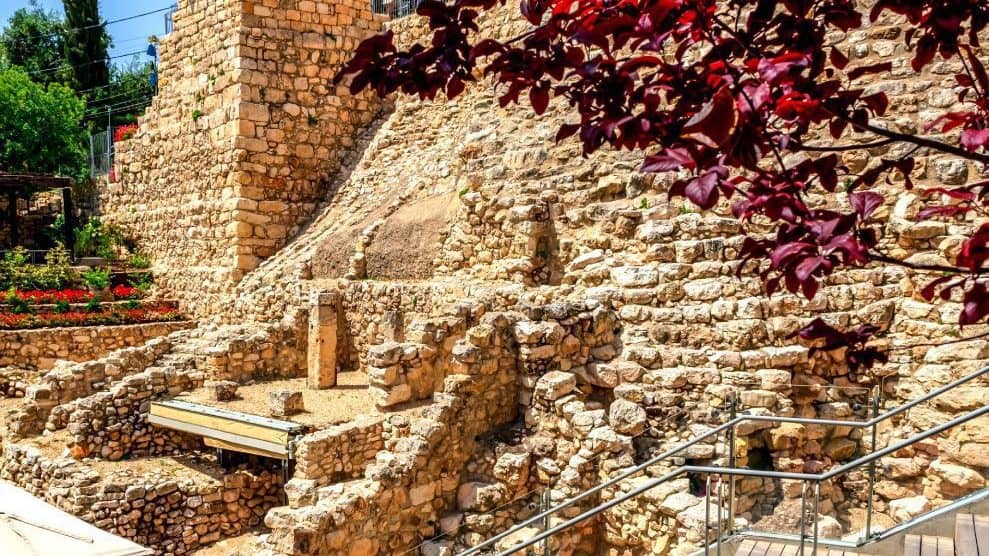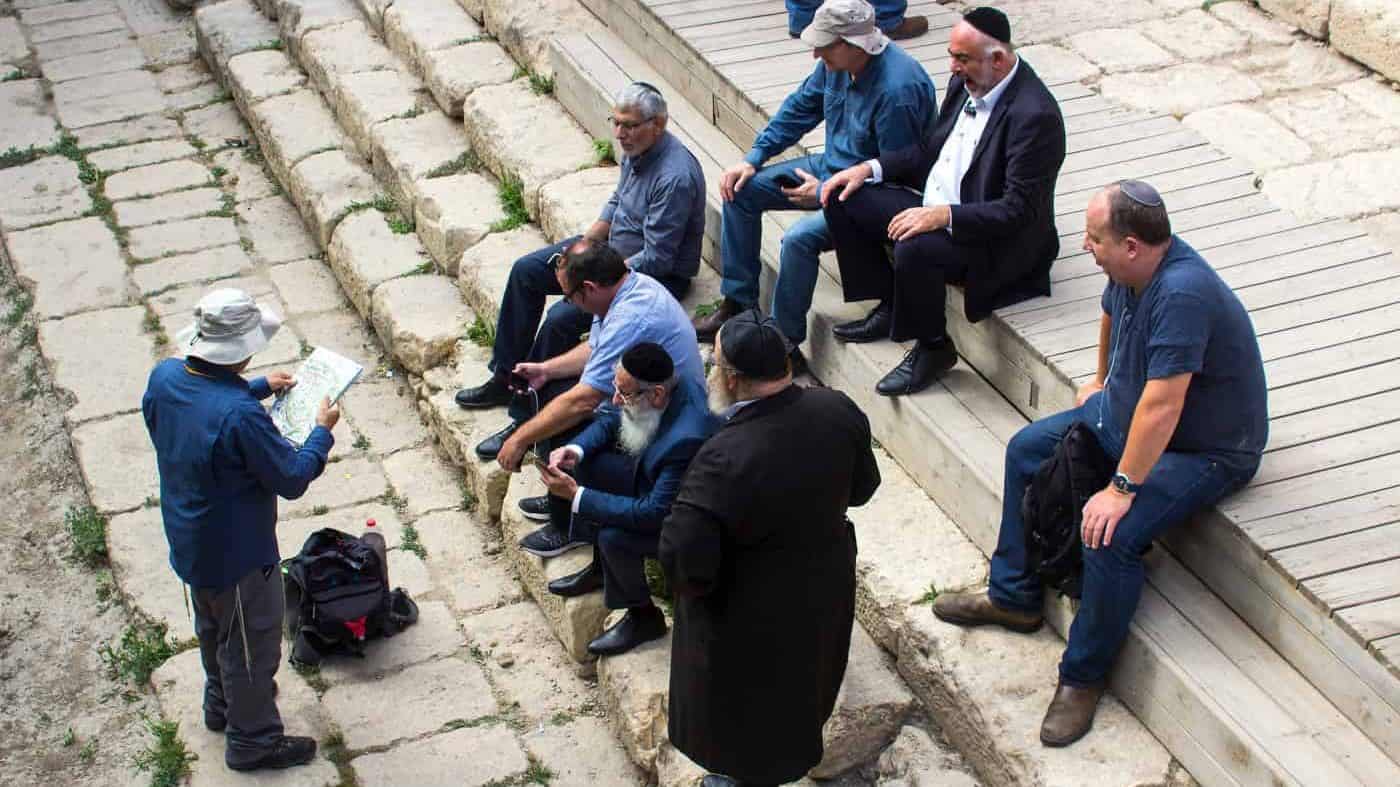Raymond Weill (1874-1950) was a French archaeologist specializing in Egyptology and the history of the ancient Levant. He is best known for his excavations in Jerusalem, where he uncovered a large part of the City of David, the biblical capital of Judah.
Raymond Weill was born in Elbeuf, France, in 1874. He studied at the École Polytechnique in Paris, but his passion was archaeology. In 1902, he left the army to pursue a career in Egyptology.
Weill’s early work focused on the Second and Third Dynasties of Egypt. He published several important works on this period, including his doctoral dissertation, Les Monuments et l’histoire des IIe et IIIe dynasties égyptiennes (1909).
Theodotos Inscription

Credit: Andrey Zeigarnik (CC BY-SA 2.0)
Raymond Weill’s Excavations in Jerusalem
In 1913, Raymond Weill began excavations in Jerusalem on behalf of Baron Edmond de Rothschild. He worked at the site of Ophel, a hill in the southeastern part of the city. Weill’s excavations revealed a large area of the City of David, including a great part of its eastern fortifications and a complex of tombs, which Weill thought to be those of the kings of Judah.
Raymond Weill’s excavations in Jerusalem were interrupted by World War I. He resumed work in 1923 and continued until 1924. His findings were published in a two-volume work, La Cité de David (1920-1947).
City of David

Groundbreaking Fieldwork
Furthermore, Raymond Weill’s excavations in Jerusalem were groundbreaking. He was one of the first archaeologists to use scientific methods to excavate the city. Moreover, his work helped to shed new light on the history and culture of the ancient Israelites.
In addition to his work in Jerusalem, Raymond Weill excavated in Egypt and the Sinai Peninsula. He published numerous works on Egyptology and the history of the ancient Levant. He was also a professor at the École des Hautes Études in Paris and the Sorbonne.
Ultimately, Weill died in Paris in 1950. He is remembered as one of the pioneers of modern archaeology in the Holy Land. His work has profoundly impacted our understanding of the history and culture of the ancient Israelites.
Jerusalem Ultimate Guide

Raymond Weill’s Legacy
Lastly, Raymond Weill’s work in Jerusalem was groundbreaking, but it was also controversial. Some scholars criticized his methods and interpretations. However, his work has stood the test of time, and he is now recognized as one of the leading authorities on the archaeology of Jerusalem.
Furthermore, Weill’s excavations in the City of David have been significant. They have helped shed light on Jerusalem’s early history and the Israelite monarchy’s development. Raymond Weill’s work has also helped to confirm the accuracy of the biblical accounts of Jerusalem’s history.
In addition, Raymond Weill’s legacy is still felt today. He is remembered as one of the pioneers of modern archaeology in the Holy Land. His work has profoundly impacted our understanding of the history and culture of the ancient Israelites. For more about him on Wikipedia!

